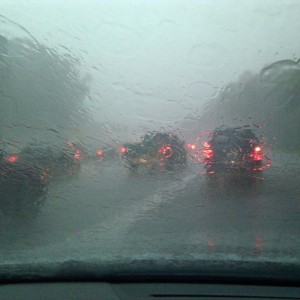Does your family have a plan in place in case a disaster happens?
Most families do not have a plan in place, but spending the time to develop one can make all the difference if your family is involved in a disaster.
Emergency Planning is Simple, but Critical!
Here are 4 basic areas to address while keeping your Family Emergency Plan simple!
- Will you receive emergency notifications directly from emergency officials?
- Do you have what you need in order to stay where ever you are (home, work, etc…) for an extended period without being resupplied?
- If you can’t stay where you are, or get home, do you have a plan on where you will go to and meet up with your family? Do you know what to take?
- Review your plan periodically so everyone know what it is.
Read below for more details on items to consider. However, regardless of the type of incident affecting you these three items are really the foundation of what you are planning for.
Emergency Messages
A frequent challenge for emergency officials is often how to quickly and accurately provide emergency messages to those who are affected by an incident. To accomplish this, officials often utilize a variety of messaging tools to try and reach everyone. However, our primary tool is our Community Notification System. The Community Notification System can provide geographically targeted messages in a variety of formats directly to people who are affected and need the information first. However, to be most effective we need people in Gallatin County to register in the system and tell how how they want to be notified and what locations they want to be notified about. Learn more by visiting our Community Notification System page.
Emergency Plan - Self Sustainment
The second activity is developing a plan for your family, or co-workers, on what you would do, and need, if you couldn’t leave where you are for an extended period of time. What different people need will vary based on the hazards you face and what you need for sustainment. So spend some time to identify what items you need if you had to remain at home or work for an extended period (minimum of three days) and couldn’t go get more supplies.
Commonly Needed Supplies
 Do you have an emergency kit prepared consisting of surplus supplies that you need to be self sufficient? Exactly what you and your family needs in a kit will vary, but likely will have the following types of items:
Do you have an emergency kit prepared consisting of surplus supplies that you need to be self sufficient? Exactly what you and your family needs in a kit will vary, but likely will have the following types of items:
- Water
- Non-perishable food (including can opener and cooking method)
- Battery powered radio
- Flashlight
- First aid kit
- Whistle (for signaling for help)
- Multi purpose tool or small tool assortment
- Special health needs (medications, respiratory protection, emergency power, etc…)
- Children’s needs
- Pet’s needs
- Fire Extinguisher
- Financial documents
Emergency Plan - Evacuation
Based on the hazards you face, a good next step to you plan would be answering the following questions:
- Where are your meeting places?
- It is good practice to pre-identify a meeting location outside of your neighborhood. Often this is a close friend, family member, work location or something like a church.
- The key is that everyone knows where to go if they have to evacuate, and where to meet up if they can’t get home.
- Who is your emergency contact person?
- If you can’t directly contact each other, who will everyone try to contact with their status. It is often good to use someone that lives elsewhere so they aren’t part of the disaster.
- Having a central person that everyone checks in with help simplify coordination of your family or co-workers.
- What are your escape routes from your location to your meeting place?
- Depending on the incident, the available options may vary. Develop a couple routes.
- If you have to leave your house, how will you take care of your animals?
- Not only if you leave them behind, but what if they need to be relocated.
- Do you have another location that livestock can be relocated?
- We’ll try to setup animal shelters, but this can take time and may not be very close to the incident.
- Have you identified what you need to take with you in case of evacuation?
What to take with you
Evacuations can often happen quickly, so there is great value in pre-identifying what you need to take with you.
- Identification
- Medications
- Pets (and supplies)
- Cash
- Important Documents
- Baby Supplies
- Jewelry and other family heirlooms
- Clothes
- Proof of Address (utility bill)
Reviewing Your Plan
Now that you’ve spent some time thinking about what you will do, make sure everyone knows that plan! In an emergency everything is hectic, so everyone having a solid understanding of the plan in their memory is important.
Remember to review it periodically to refresh everyone’s memory and identify things that may have changed.
Resources
Websites
After You Have a Plan
 Now that you’ve spent the time to develop a plan with your family, make sure you also do this:
Now that you’ve spent the time to develop a plan with your family, make sure you also do this:
- Practice the plan with your family!
- Practice makes perfect, and during the disaster is not the time to learn it!
- Review it periodically!
- Communities change, jobs change, kids get older – all things that will vary the plan.

